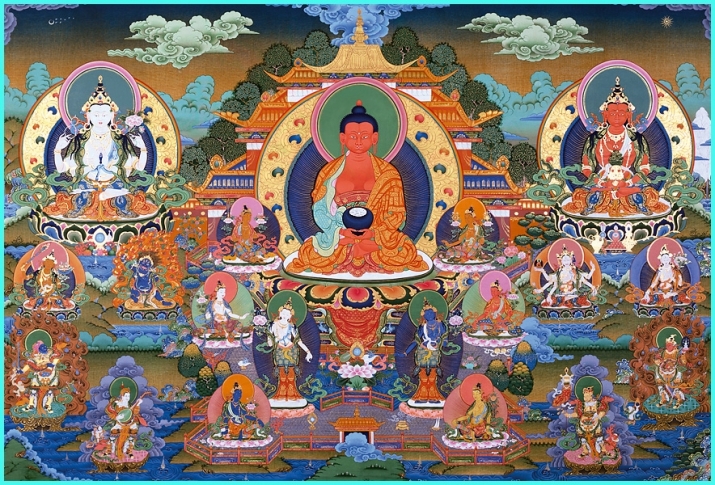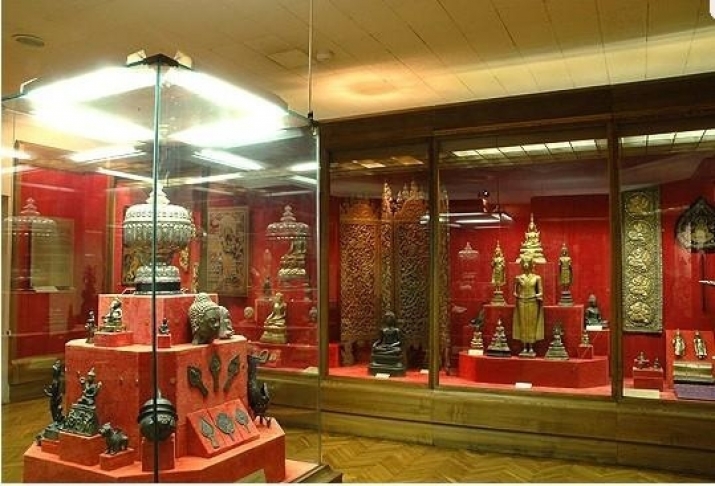NEWS
Moscow’s State Museum of Oriental Art Exhibiting Biggest Buddhist Art Collection in Russia
 A painting of Amitabha Buddha on display at the museum. From rbth.com
A painting of Amitabha Buddha on display at the museum. From rbth.comThe State Museum of Oriental Art (SMOA) in the heart of Moscow is exhibiting Russia’s biggest collection of Buddhist and Asian art, boasting a diverse collection from the Republic of Buryatia in the Russian Federation, Kazakhstan, India, Iran, Mongolia, and Tibet. Visitors can view a unique range of artifacts and art that includes paintings, sculptures, and antiquities from the Middle Ages, such as weapons, jewellery, household items, and textiles.
The museum has dedicated galleries displaying Buddhist art from China, India, Japan, Korea, and Vietnam. “Our museum comprises exhibits from Japan to Turkey,” said Tigran Mkrtychev, deputy general director for scientific work at the museum. “We also have artwork from former Soviet republics in Central Asia and the Caucasus.” Among the most impressive exhibits is a mural of the Buddha and his followers dated to the 2nd century. “It dates back to the Kushan Empire,” said Mkrtychev. The Kushan Empire (30–375) was a geopolitical force that extended from Uzbekistan all the way to the Indo-Gangetic Plain. (Russia Beyond the Headlines)
The museum also has a model of the cave monastery of Kara-Tepa (sometimes spelled Kara-Tepe), a complex of temples and monasteries that were built in the beginning of the 2nd century. Kara-Tepa, which means “Black Hill,” was built on three mounds in the northwestern Old Termez in Uzbekistan, with the caves bearing a resemblance to the rock-cut Ajanta Caves in Maharashtra, India. The museum also has a huge collection of thangkas, Buddhist paintings on cotton or silk, that depict Buddhist deities from China, Mongolia, Tibet, as well as Buryatia.
A particularly large collection of artwork from Vietnam and Indonesia is also housed in the museum. The collection from the Indonesian archipelago includes Buddhist and Hindu bronze statues as well as Balinese and Javanese shadow puppets. After the State Hermitage Museum in Saint Petersburg, the SMOA houses the largest collection of Indian art in Russia. Along with Buddhist art, it has statues of a 9th century Ganesh, 10th century Rama and Krishna from southern India, and a number of Hindu deities from the 17th and 18th centuries. “India is so diverse a country that it deserves a museum to itself,” said Mkrtychev. (Russia Beyond the Headlines)
 The Art of Indonesia Exhibit at the State Museum of Oriental Art. From mydestinationmoscow.com
The Art of Indonesia Exhibit at the State Museum of Oriental Art. From mydestinationmoscow.comThe SMOA was founded in October 1918. Its main building is known as “The House of Lunins,” adn was previously the home of the Lunin family. The Lunin clan’s most famous son Mikhail (1787–1845) was a soldier, a poet, and one of the leaders of the Decembrist revolt against Nicholas I’s (1796–1855) ascension to the throne of the Russian Empire on 26 December 1825. The museum is now one of the largest cultural educational institutions in the Russian Federation.
Besides being an exhibition center, the museum also serves an R&D function by employing professionals and researchers who curate and study the museum’s artifacts. Each year it hosts activities that include tea ceremonies, yoga classes and workshops, lectures, classes for children, concerts, films, and conferences for researchers and specialists in Asian art.
See more
Moscow museum offers a journey through ancient Asia (Russia Beyond the Headlines)
Overview of The State Museum of Oriental Art (My Destination)
General information (The State Museum of Oriental Art)
The State Museum of Oriental (RussianMuseums.info)
Kara-Tepe monastery (Mapping Buddhist Monasteries)














